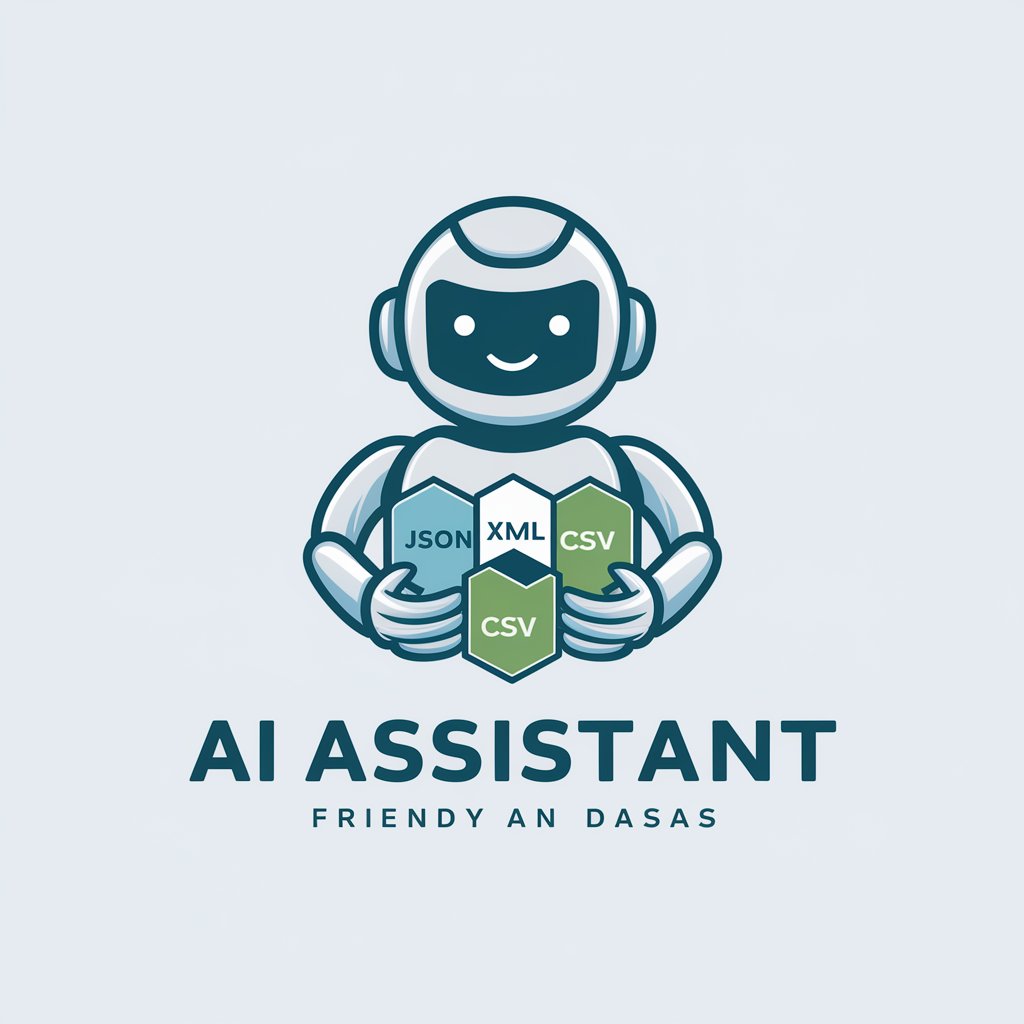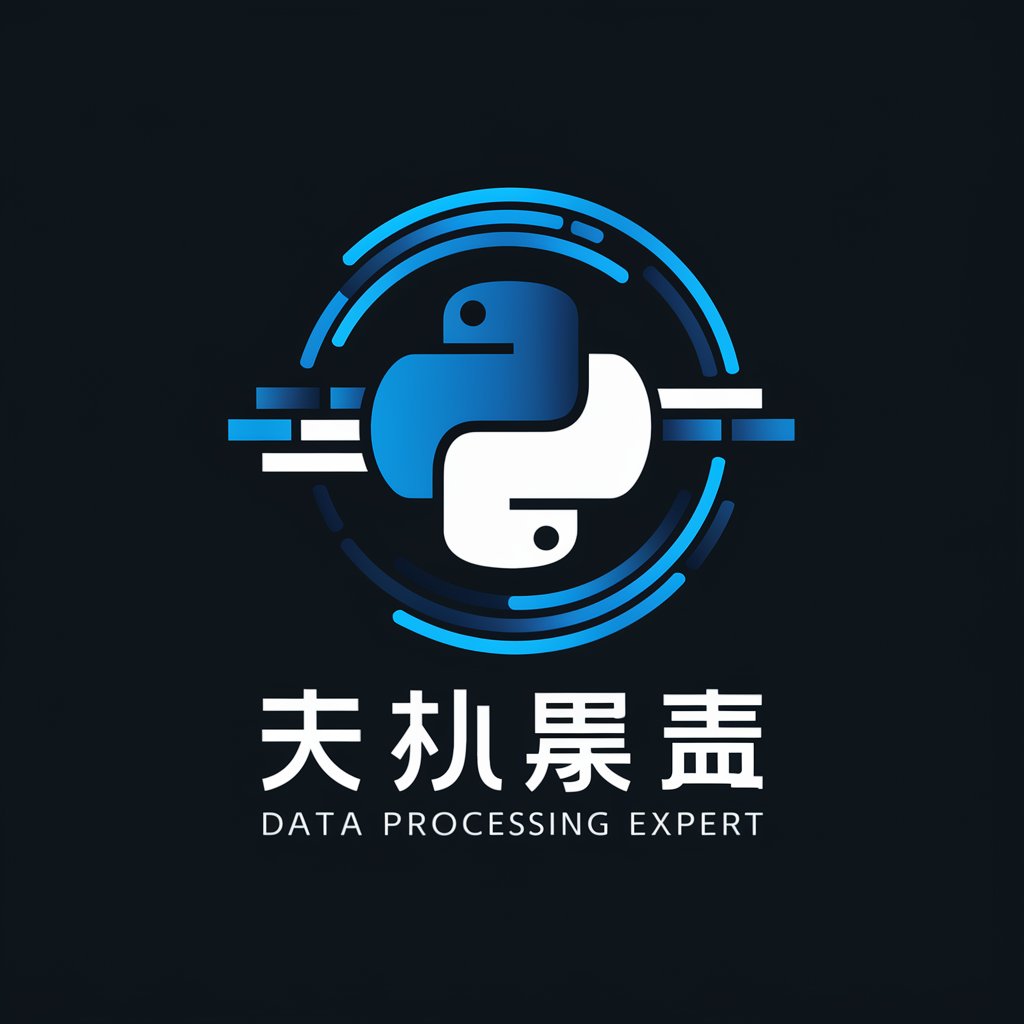数据文档处理 - Versatile Text Analysis

Welcome to 数据文档处理, your AI for efficient data management.
Empowering Insights with AI
Explain how to efficiently manage data in a large organization.
Describe the best practices for creating detailed technical documentation.
How can AI improve the process of data analysis and documentation?
List the steps to automate data entry and processing using AI.
Get Embed Code
Overview of 数据文档处理
数据文档处理, or Data Document Processing, is designed to automate and streamline the analysis, manipulation, and generation of documents that contain structured or semi-structured data. Its core purpose is to enable users to extract meaningful insights from data embedded in various document formats, such as spreadsheets, PDFs, text files, and web pages, without the need for extensive manual effort. This is achieved through a combination of natural language processing, pattern recognition, and machine learning techniques. For instance, it can transform raw data from financial reports into structured financial summaries, or convert unstructured text from legal documents into a structured database of legal precedents. Powered by ChatGPT-4o。

Core Functions of 数据文档处理
Data Extraction
Example
Extracting sales figures from a series of PDF reports to compare quarterly performance.
Scenario
A business analyst receives quarterly sales reports in PDF format from different departments. Using 数据文档处理, they can automatically extract the sales figures into a single spreadsheet for a comprehensive comparison, saving hours of manual data entry.
Text Analysis
Example
Analyzing customer feedback to identify common themes and areas for improvement.
Scenario
A customer service manager has hundreds of customer feedback entries in a database. 数据文档处理 can analyze the text, categorize feedback into themes such as 'product quality' or 'delivery speed', and highlight areas requiring attention, thus guiding strategy adjustments.
Document Generation
Example
Creating personalized financial advice reports for clients based on their investment data.
Scenario
A financial advisor uses 数据文档处理 to generate customized investment reports for clients. By inputting the client's investment portfolio data, the system automatically produces a detailed report discussing performance, risks, and recommendations, enhancing client engagement and satisfaction.
Data Visualization
Example
Generating interactive charts and graphs from survey data to present in a business meeting.
Scenario
A marketing team collects extensive survey data on customer preferences. With 数据文档处理, they can easily create visualizations such as pie charts and bar graphs to effectively communicate findings in their next strategy meeting, facilitating data-driven decision-making.
Who Benefits from 数据文档处理?
Business Analysts
Professionals who frequently deal with financial reports, market research, and performance metrics. They benefit from 数据文档处理 by quickly converting these documents into analyzable data sets, enabling faster insights and decision-making.
Content Managers
Individuals responsible for managing large volumes of digital content, such as articles, blogs, and customer testimonials. 数据文档处理 aids in organizing and analyzing content for consistency, sentiment, and engagement, improving content strategy.
Data Scientists
Experts in analyzing complex data sets who can use 数据文档处理 to preprocess text data, extract specific information from large datasets, and convert unstructured data into a structured format for further analysis.
Legal Professionals
Lawyers and paralegals can use 数据文档处理 to sift through vast amounts of legal documents, extracting relevant cases, statutes, and legal precedents. This accelerates the preparation for cases and research on legal matters.

How to Use 数据文档处理
1
Begin by visiting yeschat.ai to explore the features of 数据文档处理 without the need for signing in or subscribing to a premium plan.
2
Select a specific feature or service you wish to use, such as document summarization, language translation, or data analysis.
3
Upload your document or input your text directly into the designated field. Ensure your data is well-organized for optimal processing.
4
Customize the output settings according to your requirements, such as the level of detail for summaries or the target language for translations.
5
Review the processed output. Utilize the feedback option to refine your results, if necessary. For ongoing projects, save your settings for future use.
Try other advanced and practical GPTs
wps全能处理器
AI-driven WPS Office processing made easy.

Transaction Processing Systems (TPS) 事务处理系统
Streamline Your Transactions with AI Power

json数据格式处理
Simplifying Data Formats with AI

文档处理专家
Revolutionizing Document Analysis with AI

主题处理专家
Blending Poetry with Planning

Mindful Peace
Cultivate mindfulness and tranquility with AI-driven guidance.

中俄文本处理专用
Empowering text analysis with AI-driven insights.

数据处理专家
Empowering Data Analysis with AI

AI 文案处理
Elevate Your Text with AI-Powered Precision

顶中顶中顶小说大师
Craft Your Story with AI

佛顶智者
Unlocking Buddhist Wisdom with AI

顶级高情商学家
Empowering decisions with AI intelligence

Detailed Q&A about 数据文档处理
What types of documents can 数据文档处理 handle?
数据文档处理 is designed to work with a wide range of document types, including text files, PDFs, spreadsheets, and even images with text, leveraging OCR technology.
Is there a file size limit for documents processed by 数据文档处理?
Yes, while 数据文档处理 can process large documents, there's a file size limit to ensure optimal performance and quick processing times. The specific limit depends on the feature being used.
Can 数据文档处理 translate technical documents accurately?
数据文档处理 uses advanced AI models trained on a diverse corpus, including technical materials, to provide accurate translations. However, highly specialized or niche terminology might require manual verification.
How does 数据文档处理 ensure the privacy of my documents?
Privacy is a cornerstone of 数据文档处理's design. It employs encryption for data in transit and at rest, and users have control over their data deletion. The system is regularly audited for security compliance.
Can I use 数据文档处理 for academic research?
Absolutely. 数据文档处理 is an invaluable tool for academic research, offering features like summarization, keyword extraction, and citation generation, which can help streamline the research process.
